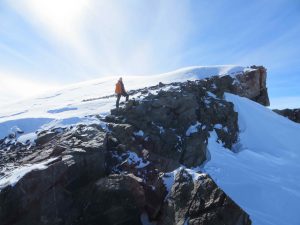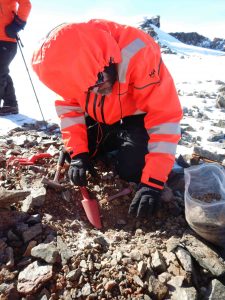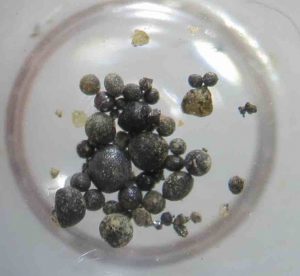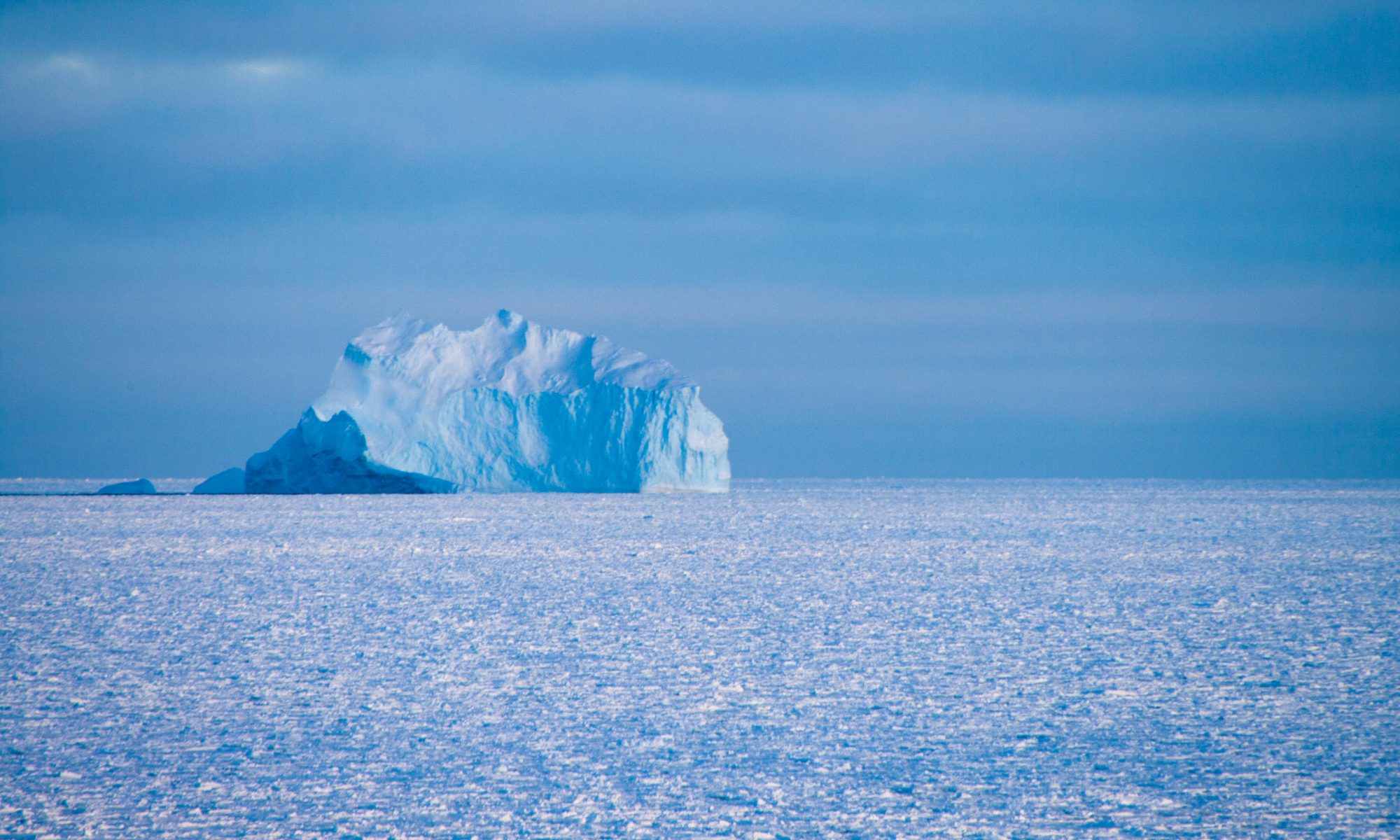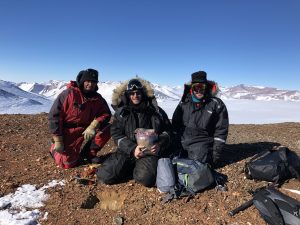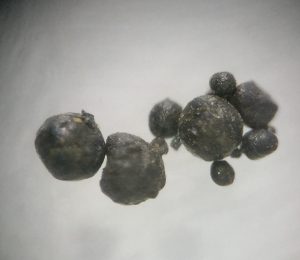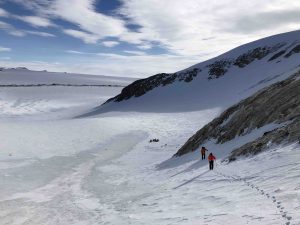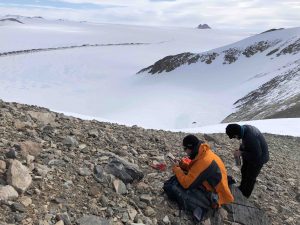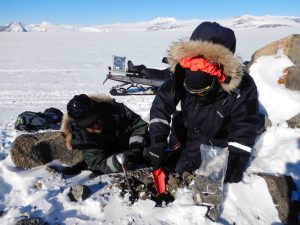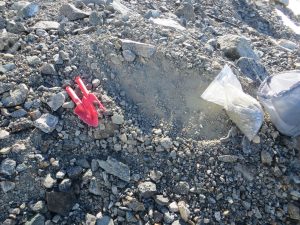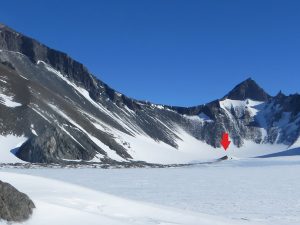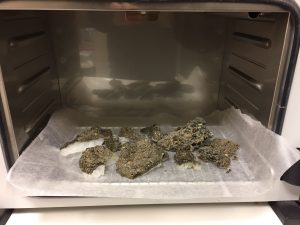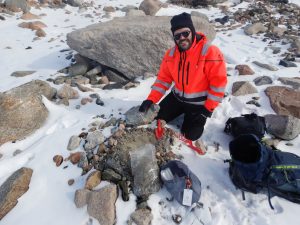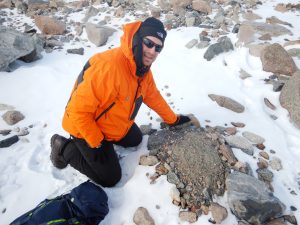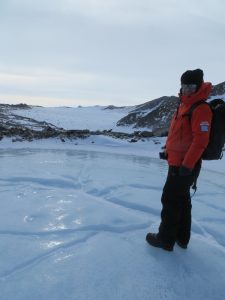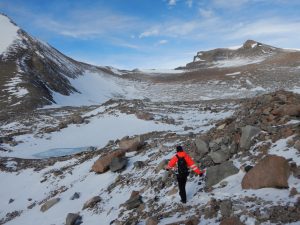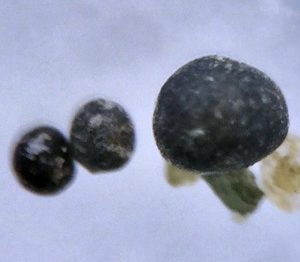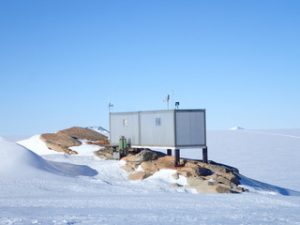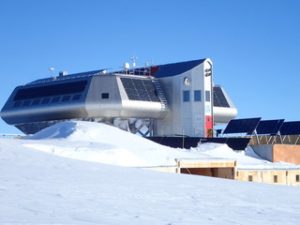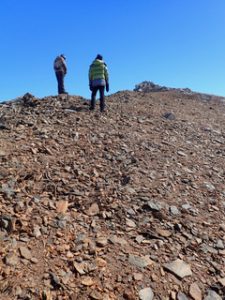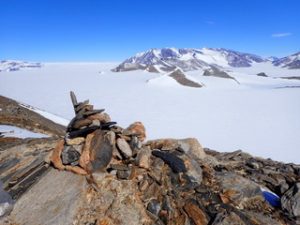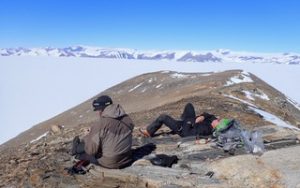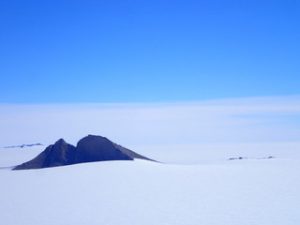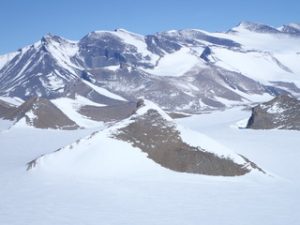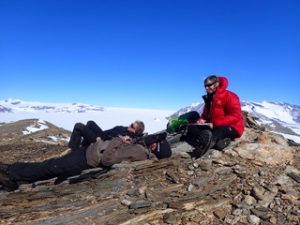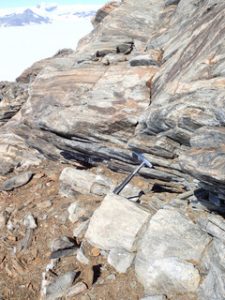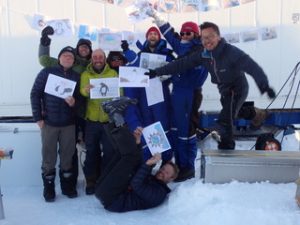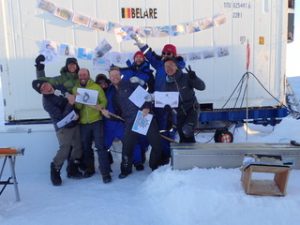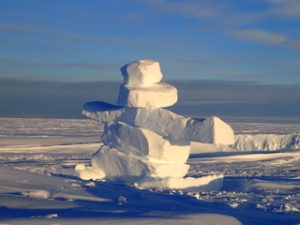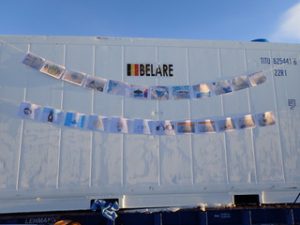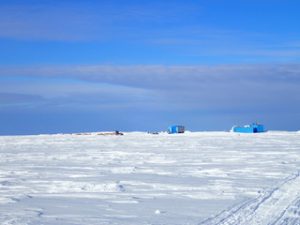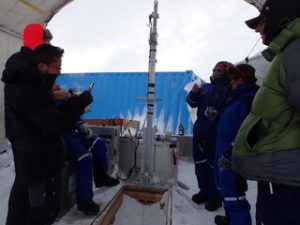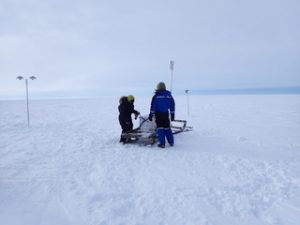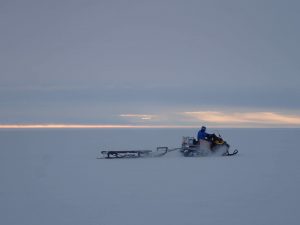On Tuesday, we visited Wideroefjellet, where we know micrometeorites are abundant based on an earlier expedition in 2012. To reach a ridge near the highest summit of the Sør Rondane Mts., of course we need to make a small effort and climb this monster using crampons, ice picks and snow poles. We reach the ridge in 2.5 hours. The weather is good, yet the wind-chill factor goes down to -30˚C near the sampling site. Exhausted (except for robot Raphael!), we start our sampling. Even in only 5 years, this site has changed with significantly more snow accumulation. The soil and underlying rock are frozen, and we need to use the chisel and hammer to collect fine-grained sediment. Matthias points out that the other side of the valley may also be a good site to sample. Reluctantly, as it’s getting late and temperatures are starting to go down, we move in that direction to discover that this is indeed a perfect location! With backpacks full of sediment, we move down to the skidoo parking spot in 1h15m and return to the station after a skidoo ride of 1h. No need to say that again the collected samples appear full of micrometeorites using the microscope at the station?
What are we going to do with all these samples in the range of 70 kg? Well, pick out all the micrometeorites of course! Because the larger a micrometeorite collection is, the more chances of finding extremely rare material. Just think of unmelted micrometeorites, rare achondritic micrometeorites, airblast particles…? Who knows what secrets this now very large collection holds?
